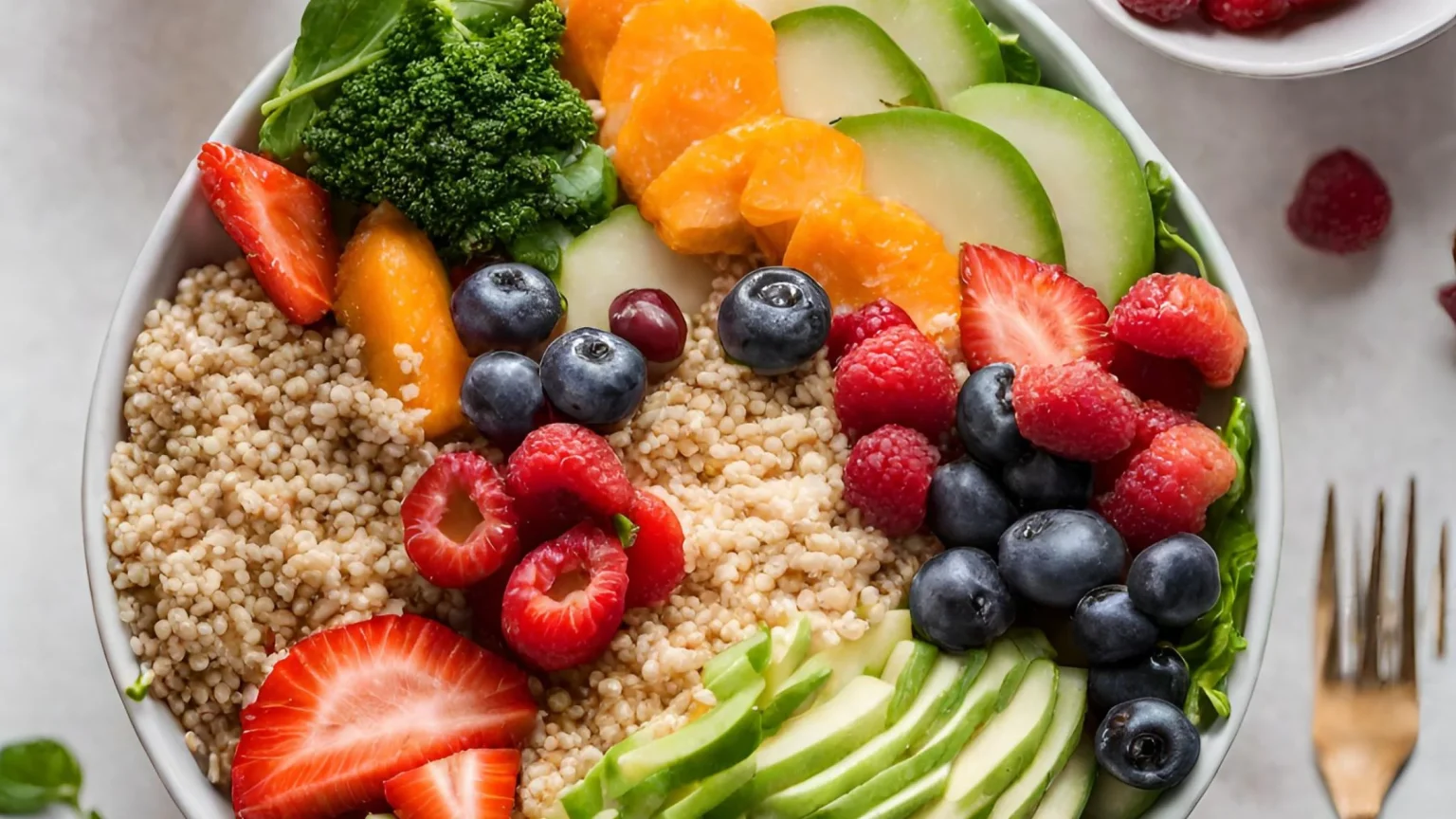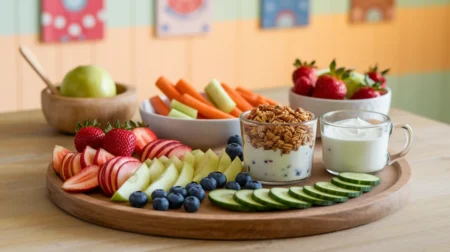In today’s fast-paced world, it can feel challenging to maintain a healthy eating routine that keeps you satisfied and nourished. However, there is a concept known as healthy volume eating that can help you achieve both satiety and nutrition.
Healthy volume eating is a strategy that focuses on consuming foods that are low in calorie but high in volume. It allows you to enjoy a larger volume of food while keeping your calorie intake in check. By choosing nutrient-dense, low-calorie foods, you can feel full and satisfied while supporting your overall health goals.
Incorporating healthy volume eating into your meal plan can be a game-changer. Not only does it help you maintain a healthy weight, it also provides a plethora of other benefits, such as increased satiety, improved digestion, and enhanced nutrient intake.
Are you intrigued by the idea of healthy volume eating? In this article, we will explore the principles behind volume eating, share practical tips for incorporating it into your daily meals, and discuss the potential benefits it offers. So get ready to master the art of healthy volume eating and discover a new way to eat that leaves you feeling satisfied and nourished.
Key Takeaways:
- Healthy volume eating focuses on consuming foods that are high in volume but low in calories.
- It allows you to eat a larger amount of food while minimizing calorie intake.
- Volume eating can aid in weight management and help you feel full and satisfied.
- Incorporating nutrient-dense, low-calorie foods into your meals is key to successful volume eating.
- Volume eating offers a unique approach to satiety and nutrition.
Understanding Volume Eating and Its Benefits
In this section, we will delve into the principles of volume eating and explore the numerous benefits it offers. Volume eating focuses on consuming foods that are low in calories but high in volume, allowing you to enjoy a larger amount of food while keeping your calorie intake in check. By incorporating high-volume, low-calorie foods into your diet, you can feel full and satisfied while promoting healthy eating habits.
One of the primary benefits of volume eating is that it helps you feel full without consuming excess calories. By choosing high-volume foods, you can satisfy your hunger and reduce the likelihood of overeating. These foods, often low in calories, can be packed with essential nutrients, making them nutrient-dense and ideal for supporting overall health.
High-volume foods are typically rich in water and fiber, both of which contribute to their ability to fill you up. Water adds volume to the food without adding calories, making it an excellent ally in achieving satiety. Fiber, on the other hand, not only aids in digestion but also promotes a feeling of fullness, making you less likely to overindulge.
“Volume eating allows you to consume a larger amount of food for fewer calories, making it a beneficial strategy for weight management and healthy eating.”
Low-calorie foods like fruits, vegetables, and whole grains are excellent examples of high-volume foods that can help you feel full while keeping your calorie intake in check. Incorporating these foods into your meals allows you to add volume to your plate without adding excessive calories, aiding in weight management and creating a calorie deficit if desired.
To further illustrate the benefits of volume eating, let’s take a look at the following table comparing high-volume foods (low in calories) versus high-calorie foods (lower in volume but higher in calories).
| High-Volume Foods (Low in Calories) | High-Calorie Foods (Low in Volume) |
|---|---|
| Fruits and vegetables | Fried foods and desserts |
| Lean proteins (chicken, fish) | Fatty meats (beef, pork) |
| Whole grains (quinoa, brown rice) | Refined grains (white bread, pasta) |
Table: A comparison of high-volume foods (low in calories) and high-calorie foods (low in volume)
As you can see, high-volume foods like fruits, vegetables, and lean proteins provide a larger amount of food for fewer calories, making them excellent choices for volume eating. On the other hand, high-calorie foods like fried foods, fatty meats, and refined grains offer fewer nutrients and are easier to overconsume, resulting in a higher calorie intake.
By adopting volume eating as part of your healthy eating plan, you can enjoy the benefits of feeling full while consuming a nutrient-dense diet that supports your overall health and weight management goals. In the next section, we will discuss practical ways to incorporate volume eating into your daily meal plan.
Incorporating Volume Eating into Your Meal Plan
When it comes to maintaining a healthy weight and promoting weight management, incorporating volume eating into your daily meal plan can be a game-changer. This eating strategy focuses on consuming foods that provide a high volume but are low in calories, allowing you to eat a larger amount of food while still achieving a calorie deficit. Additionally, volume eating can help you feel the sensation of fullness, preventing overeating and promoting satiety.
A key component of volume eating is including plenty of fruits and vegetables in your meals. These whole foods are nutrient-dense and low in calories, making them ideal choices for adding volume to your plate. Not only do they provide a satisfying amount of food, but they also offer a wide range of essential vitamins, minerals, and antioxidants that are beneficial for overall health.
Here are some examples of high-volume foods that you can incorporate into your meal plan:
- Cucumbers
- Broccoli
- Spinach
- Watermelon
- Oranges
In addition to fruits and vegetables, volume eating allows for the inclusion of other foods that are high in volume but low in calories. This ensures that you can enjoy a larger amount of food without compromising your calorie intake. By adopting a volume eating approach, you can still indulge in foods you love while maintaining a healthy weight.
It’s important to note that volume eating may not be suitable for individuals with disordered eating patterns or certain medical conditions. If you have any concerns or questions, it is best to consult with a healthcare professional or registered dietitian before incorporating volume eating into your meal plan.
Incorporating volume eating into your meal plan is a sustainable and satisfying approach to weight management. By focusing on high-volume, low-calorie foods, you can optimize your nutrition and support your overall health goals. So why not start exploring new recipes and meal ideas that prioritize volume eating? Your body will thank you!
Tips and Strategies for Successful Volume Eating
Are you looking to incorporate volume eating into your daily routine? This beginner’s guide to volume eating will provide you with the tips and strategies you need to successfully adopt this way of eating. By focusing on high-volume foods that are low in calories, you can enjoy a larger volume of food while still maintaining a calorie deficit and promoting weight loss. Follow these tips to optimize your volume eating experience:
1. Embrace the Principle of Volume Eating
The principle of volume eating is simple: opt for foods that are high in volume but low in calories. By doing so, you’ll be able to eat a larger quantity of food without consuming excessive calories. This approach allows you to feel satisfied and full, without sacrificing flavor or nutrition.
2. Incorporate High-Volume Foods into Your Meals
When planning your meals, prioritize foods that add volume without adding many calories. Examples of high-volume foods include fruits, vegetables, whole grains, and lean proteins. By adding these foods to your plate, you can increase the volume of your meal without significantly increasing the calorie count.
3. Be Mindful of Certain Foods
While volume eating can be a helpful strategy for weight management, it’s important to be mindful of certain foods. Some food groups, such as oils, nuts, and high-fat proteins, are high in calories and should be consumed in moderation. Balance your meals by including a variety of nutrient-dense, low-calorie options.
4. Discover the Power of High-Volume, Low-Calorie Foods
| High-Volume Foods | Low-Calorie Foods |
|---|---|
| Fruits and vegetables | Lean proteins |
| Whole grains | Legumes |
| Broth-based soups | Egg whites |
By including high-volume foods like fruits, vegetables, whole grains, and broth-based soups in your meals, you can add more volume while keeping the calorie intake low. These foods are packed with nutrients, high in fiber, and will help you feel full and satisfied.
5. Practice Intuitive Eating
Volume eating allows you to eat in a high volume without consuming excessive calories. This approach aligns with the principles of intuitive eating, which encourages you to listen to your body’s hunger and fullness cues. By focusing on the volume and nutrition of your food, you can maintain a healthy weight and develop a positive relationship with food.
Volume eating offers a valuable strategy for weight loss success and overall health. By emphasizing the volume of food while minimizing calorie intake, this way of eating allows you to feel satisfied without sacrificing flavor or enjoyment. Incorporate these tips and strategies into your meal planning and embrace the power of volume eating.
Conclusion
In conclusion, healthy volume eating offers a unique approach to satiety and nutrition. By focusing on high-volume, low-calorie foods, you can eat a larger amount of food while minimizing calorie intake. This eating strategy can aid in weight management, help you feel full and satisfied, and support your overall health goals.
Experiment with incorporating volume eating into your meal plan and enjoy the benefits it brings to your well-being. By including nutrient-dense foods that are high in volume but low in calories, you can add more volume to your meals without compromising on taste or satisfaction.
Make conscious choices while planning your meals, opting for foods that are high in fiber and promote a feeling of fullness. Emphasize whole foods, such as fruits and vegetables, which are not only low in calories but also packed with essential vitamins and minerals.
By embracing volume eating as a long-term eating pattern, you can maintain a healthy weight, support your weight loss goals, and develop a healthier relationship with food. Start incorporating high-volume foods into your meals today and discover the positive impact this strategy can have on your overall health and well-being.
FAQ
What is volume eating?
Volume eating is a strategy for healthy eating that focuses on consuming foods that are high in volume but low in calories. The goal is to eat a larger amount of food while minimizing calorie intake, which can help you feel full and satisfied.
How can volume eating help with weight management?
Volume eating allows you to eat a larger volume of food while consuming fewer calories. This can create a calorie deficit, which is necessary for weight loss or weight maintenance. Additionally, high-volume foods like fruits and vegetables are often low in calories but high in nutrients, making them ideal for promoting a healthy weight.
Are there specific foods I should focus on for volume eating?
Yes, foods that are high in volume but low in calories are great choices for volume eating. This includes fruits and vegetables, whole grains, lean proteins, and foods high in fiber. These foods help add volume to your meals without adding excessive calories.
Can volume eating be helpful for individuals with disordered eating patterns?
Volume eating could be beneficial for those with disordered eating patterns, as it can promote a healthier relationship with food. However, it is important to approach volume eating mindfully and work with a healthcare professional if you have specific concerns or questions.
What are the pros and cons of volume eating?
The primary benefits of volume eating include feeling full and satisfied, supporting weight management, and promoting overall health. On the other hand, some individuals might find it challenging to eat high-volume foods without certain foods they enjoy. It’s crucial to make sure you’re still getting adequate nutrients from all food groups.
How can I incorporate volume eating into my meal plan?
Planning your meals around high-volume foods is a great way to incorporate volume eating. Opting for foods like fruits, vegetables, whole grains, and lean proteins can add more volume to your plate without significantly increasing the calorie content. Balancing your meals with a variety of nutrients is also important.
Can volume eating help with weight loss?
Yes, volume eating can be a useful tool for weight loss. By focusing on foods that are high in volume but low in calories, you can create a calorie deficit, which is essential for weight loss. Additionally, volume eating emphasizes whole, nutrient-dense foods, which can aid in weight loss success.











